🔍 Azure Load Balancing: Choose the Right Option

What is Load Balancing?
Load balancing is the even distribution of network traffic across a group of backend computing resources or servers. The primary goals of load balancing are:
✅ Optimizing resource utilization
✅ Maximizing throughput & performance
✅ Minimizing response time
✅ Ensuring high availability
✅ Preventing overload on a single resource
In Azure, there are multiple load-balancing options, each designed for different traffic types and use cases.
🔍 Azure Load Balancing Options
| Service | Scope | Recommended for | Layer |
|---|---|---|---|
| Azure Load Balancer | Regional | Non-HTTP(S) workloads | Layer 4 |
| Traffic Manager | Global | DNS-based traffic routing | Layer 7 (DNS) |
| Azure Application Gateway | Regional | HTTP(S) web traffic | Layer 7 |
| Azure Front Door | Global | Web applications, API acceleration | Layer 7 |
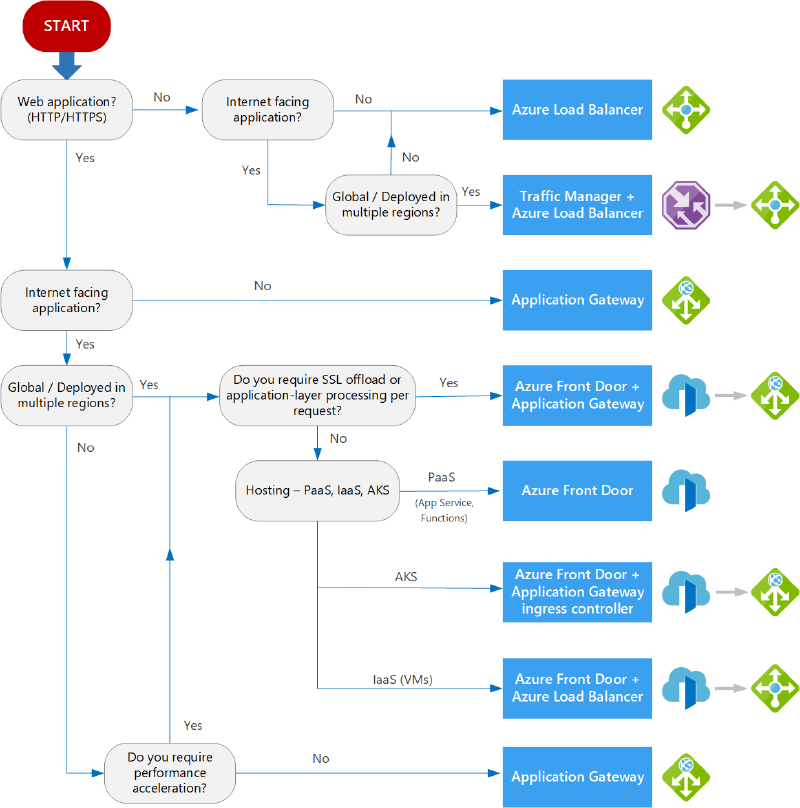
Now, let’s explore each of these services in detail.
🌍 Azure Load Balancer (ALB)

Azure Load Balancer is a Layer 4 (TCP/UDP) load-balancing service designed for high-performance and ultra-low-latency traffic. It efficiently distributes inbound and outbound traffic while ensuring high availability across Availability Zones.
Types of Azure Load Balancers
| Type | Purpose |
|---|---|
| Public Load Balancer | Distributes internet-facing traffic across VMs in a VNet. |
| Internal Load Balancer | Distributes private network traffic within Azure. |
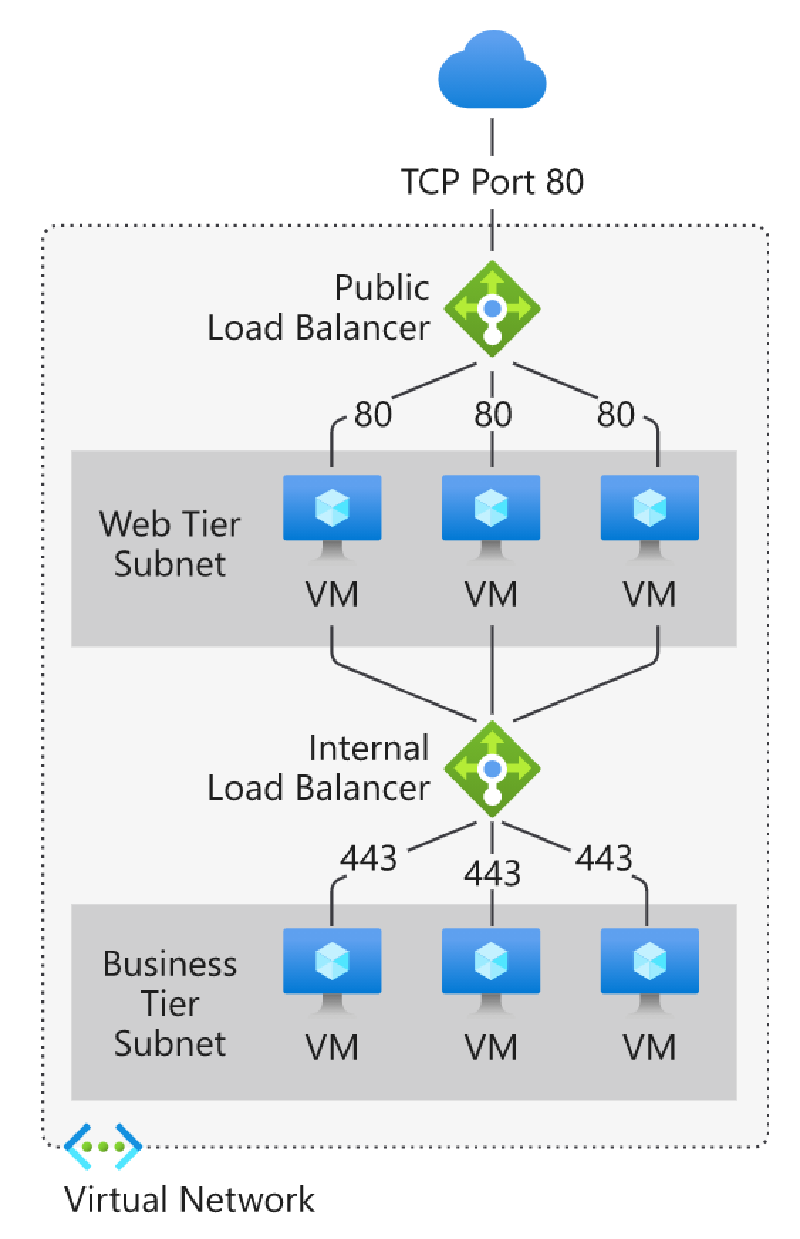
Availability Zone Configurations
| Mode | Behavior |
|---|---|
| Zone Redundant | Uses a single IP, surviving zone failures. |
| Zonal | Restricts traffic to a specific zone. |

Standard vs. Basic Load Balancer
| Feature | Standard | Basic |
|---|---|---|
| Backend pool size | 1000 VMs | 300 VMs |
| Health probes | TCP, HTTP, HTTPS | TCP, HTTP |
| Secure by default | ✅ Yes | ❌ No |
| HA Ports | ✅ Available | ❌ Not available |
| SLA | ✅ 99.99% | ❌ Not available |
🌐 Azure Traffic Manager (ATM)

Traffic Manager is a DNS-based global load balancer, designed to distribute traffic across multiple Azure regions. It does not directly route traffic—instead, it resolves requests to the nearest healthy backend.
How It Works
1️⃣ A client requests a domain (e.g., app.contoso.com).
2️⃣ The DNS system redirects to contoso.trafficmanager.net.
3️⃣ Traffic Manager selects a backend using health checks & routing rules.
4️⃣ The client receives the IP of the closest, available backend and connects directly.
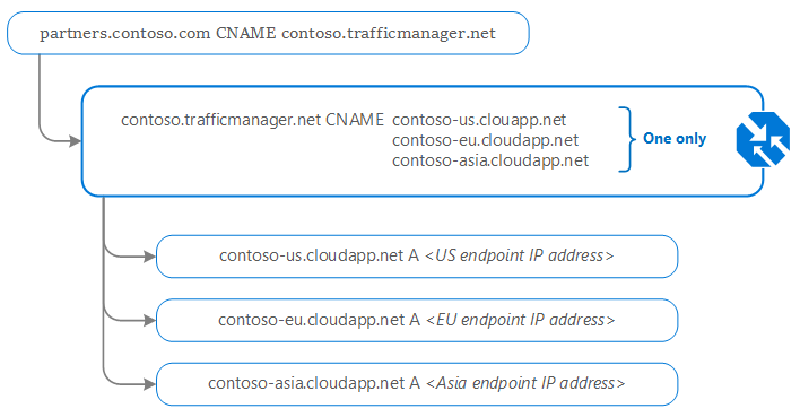
Routing Methods
| Routing Method | Use Case |
|---|---|
| Priority | Primary backend with failover options. |
| Weighted | Distribute traffic based on weights. |
| Performance | Route traffic to the closest backend. |
| Geographic | Route traffic based on user location. |
| MultiValue | Return multiple healthy endpoints. |
| Subnet | Route based on user IP ranges. |
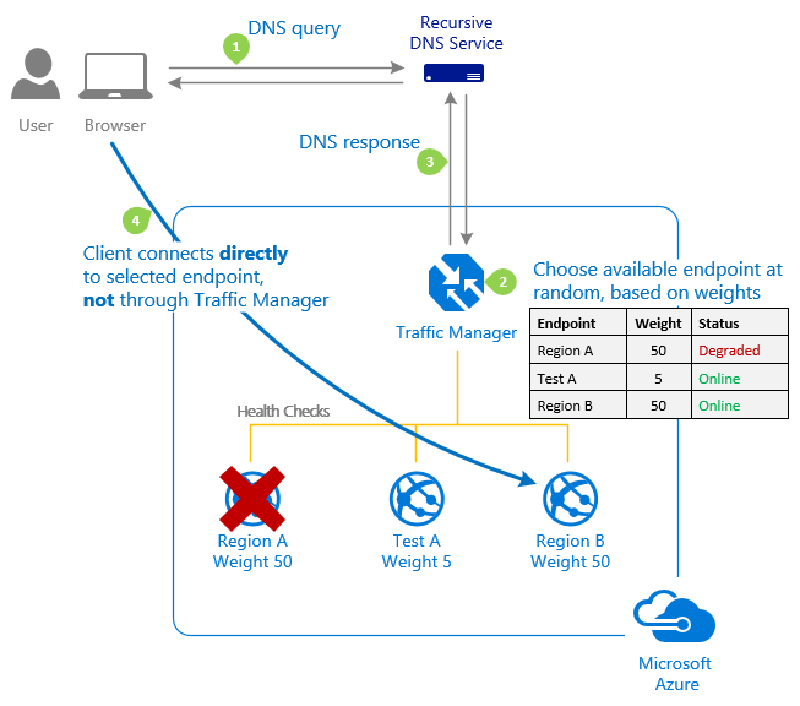
Traffic Manager is ideal for:
✔️ Failover between Azure regions
✔️ Multi-region deployments
✔️ Hybrid cloud environments
🔹 Azure Application Gateway (APG)

Application Gateway is a Layer 7 load balancer designed specifically for HTTP(S) traffic. It provides advanced web traffic routing, SSL offloading, and Web Application Firewall (WAF) integration.
Key Features
✅ Path-based routing → Direct requests to different backends based on URL paths.
✅ Session affinity → Keep users connected to the same backend server.
✅ SSL Termination → Offload SSL decryption to reduce backend CPU usage.
✅ Autoscaling → Dynamically scale based on traffic load.
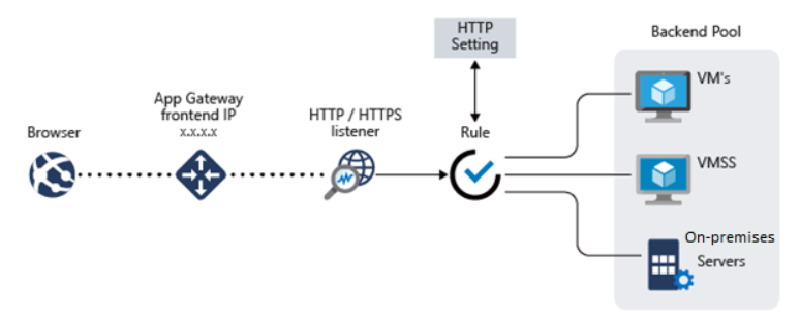
Best for:
✔️ Web applications that require advanced traffic routing.
✔️ Security-conscious deployments using WAF protection.
🌎 Azure Front Door (AFD)

Azure Front Door is a global Layer 7 service that combines load balancing, caching, acceleration, and security into one solution. It ensures high availability and low-latency for web applications.
Key Capabilities
✅ Global HTTP(S) load balancing → Route traffic to the nearest healthy region.
✅ SSL offloading & URL rewriting → Enhance security & performance.
✅ Caching & acceleration → Reduce latency via Edge locations.
✅ DDoS Protection & WAF → Secure web apps from threats.
💡 Front Door vs. Traffic Manager:
🔹 Front Door → Routes traffic in real-time based on latency.
🔹 Traffic Manager → Routes via DNS resolution, which is slower due to caching.
Best for:
✔️ Global applications that need low latency.
✔️ Web APIs requiring intelligent traffic routing.
🌍 Global vs. Regional Load Balancing
| Service | Scope | Use Case |
|---|---|---|
| Azure Front Door | Global | HTTP(S) traffic acceleration & load balancing. |
| Traffic Manager | Global | DNS-based traffic routing. |
| Application Gateway | Regional | Web application load balancing. |
| Azure Load Balancer | Regional | Non-HTTP(S) workloads. |
💡 When to Choose Which?
| Scenario | Recommended Service |
|---|---|
| Distribute global HTTP(S) traffic | Azure Front Door |
| Route traffic between regions via DNS | Traffic Manager |
| Load balance internal traffic within Azure | Azure Load Balancer |
| Optimize web application performance | Azure Application Gateway |
📌 Final Thoughts
Azure offers multiple load balancing solutions, each designed for specific traffic types, regions, and use cases. Whether you’re building a global web application or optimizing regional traffic, choosing the right service is key to maximizing performance, availability, and security.
💡 Summary:
✔️ Use Front Door for global web acceleration.
✔️ Use Traffic Manager for DNS-based failover.
✔️ Use Application Gateway for web app security & routing.
✔️ Use Azure Load Balancer for high-performance, low-latency workloads.